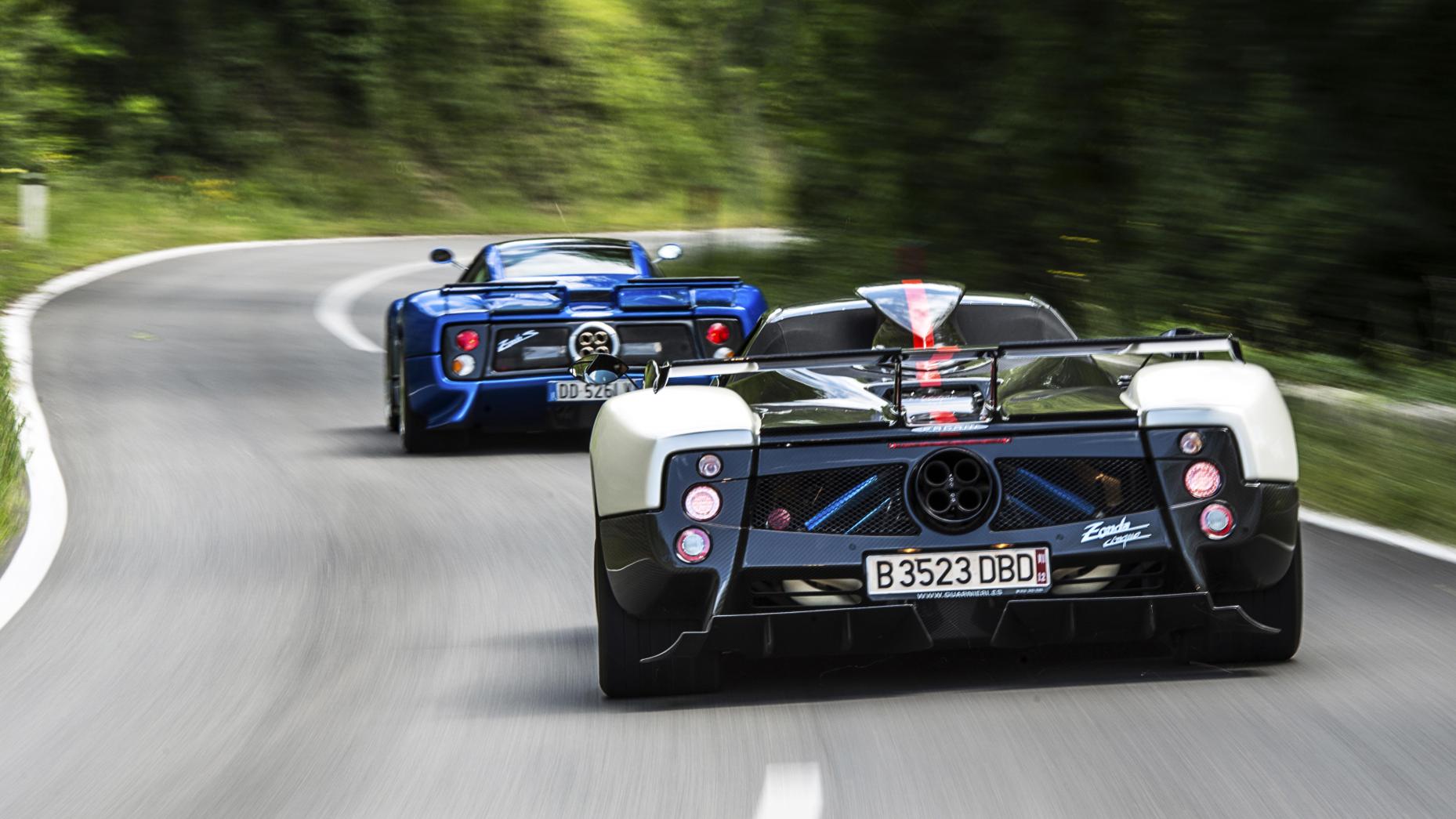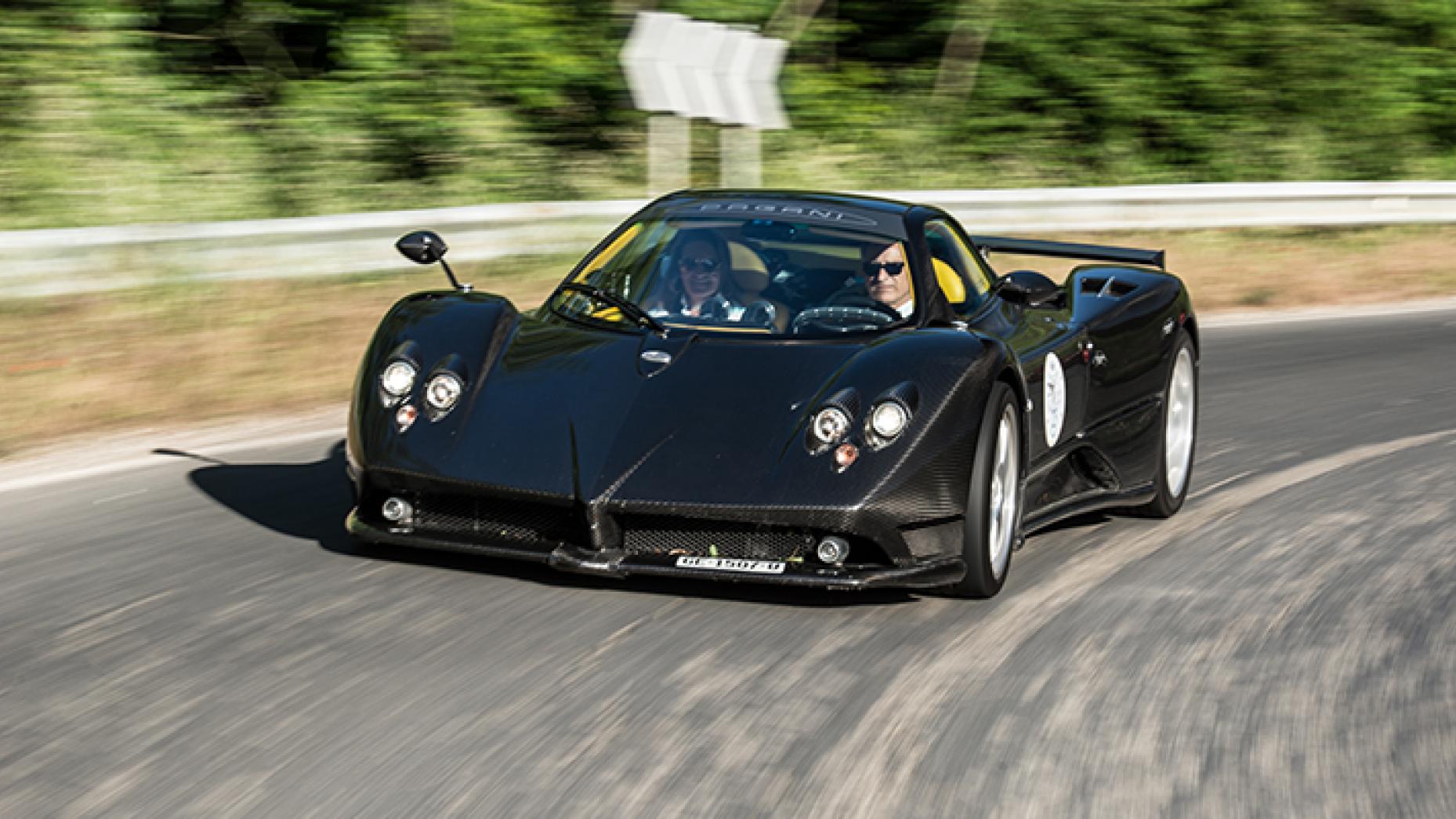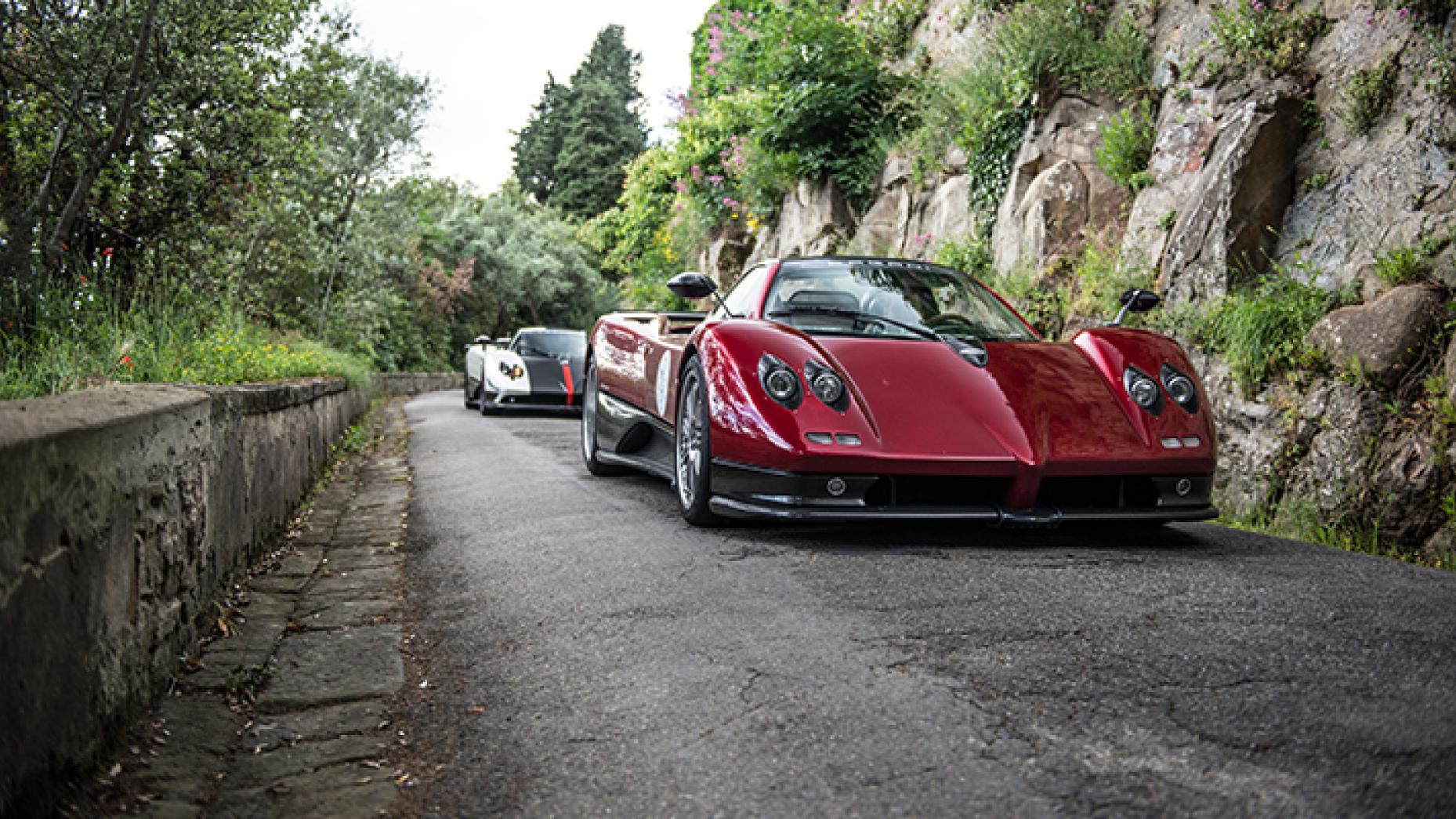From the archives: A Pagani tour of Italy





I’m currently sat in a Pagani Zonda S, making significant progress through rural Italy en route from Radda to Florence. There’s a short, silver-haired, bespectacled man tucked up against the wheel.
He’s called Horacio Pagani, he’s the eponymous owner and creative director of one of the most exciting supercar builders in the world and he’s apparently mistaken his fingers for Ringo Starr’s drumsticks. He’s tapping at the fine, hand-trimmed cream leather steering wheel, while whistling The Beatles’ ‘I Want to Hold Your Hand’. This is something I wasn’t expecting.
Words and Pictures: Rowan Horncastle
Behind are Horacio’s sons, customers and friends, single-file - just - in a boisterous lineage of his creations. There’s an original C12, a Zonda F, the roadster version of the same car and a very rare Cinque Roadster looking positively common in the company of the one-off Zonda HH. To top it off, there’s a contemporary Huayra straight from the Mille Miglia rally (hence the geographical paint job).
This part of Tuscany is having a glamorous month. Barely two weeks ago, 350 Lamborghinis shook this year’s vintage of grapes from their stalks as they raucously snaked their way through Chianti.
Now Pagani is doing the same. But this isn’t a ‘my supercars are louder and more exotic than yours’ salute to Sant’Agata. It’s a homecoming, an opportunity for owners, the whole Pagani family and potential customers from around the world to get together and enjoy their cars. It’s also turning a small proportion of Italy a little bit… loud.





“I love all cars,” Pagani’s boss says with a smile as he glances across at me. “Ferrari, Lamborghini, I love them all. But my cars are… different.” He’s not wrong. Anyone who’s played Gran Turismo, read Top Gear or simply typed “Pagani” into Google will know they’re something special. His cars have a wildly different aesthetic, wear interior instruments as jewellery, have a very specific feel and gravity. And they’re all the vision of this passionate, determined and meticulous man.
Horacio spent his youth in his native Argentina, making cars out of balsa wood that, when seen today, quite obviously mimic the Porsche 917. But he wanted to build real supercars, and so duly moved to Italy clutching a letter from his friend ‘El Maestro’ - Juan Manuel Fangio - recommending that Lamborghini should snap the little designer up. Which it did. In 1987, Horacio found himself heading up the newly formed Composites Department.
You see, Horacio is Mr Carbon Fibre. He actually invented various manufacturing techniques that are now being used on the Airbus A380 aeroplane and various specialised cars around the world. But it was the Lamborghini Countach Evoluzione that made his name.
It was the first car to make use of the newly hatched lightweight carbon tech, but Lambo subsequently didn’t think carbonfibre was a production technique worth pursuing - at the time, at least. Horacio differed, so left to do his own thing, and build his own car. A car that became the Zonda.





“Supercars didn’t used to be usable,” Horacio claims, while grimacing around his translation with a concertinaed forehead, “I wanted a comfortable, safe and usable supercar.”
The whole process may have started modestly - the Zonda was baked in a tiny autoclave that’s still active in the corner of the Pagani factory in Modena - but Pagani’s first supercar has been on a sustained evolutionary path, refusing to die over the last decade, with a total of 136 produced.
Genesis was the C12: a 6.0-litre, 395hp AMG V12 plopped into a radical, almost fictitious shape. There have been many iterations, and recently, Pagani applied the defibrillator once more.
We saw the final chapter in Chianti: the aeroed-up Zonda Revolucion - 800bhp, €2.2 million and potentially up to 15 seconds quicker around the Nürburgring than the first Zonda R, itself the fastest track car to have ever laid down a time at the Green Hell.
But the Zonda’s magic exceeds pure speed and Nordschleife lap times. Something perfectly showcased as a howl of them rolls into the central piazza of Montepulciano. Normally, this is a quiet medieval town loved for its walkable, car-free streets. But a plethora of Paganis trumps pedestrianisation, and these space-age supercars offer a visual juxtaposition against the Renaissance architecture like no other.
A group of kids spot the cars - they’re probably on their computer desktops or bedroom walls - and seeing them makes them so wide-eyed and shocked that their jaws slacken and nearly tumble down the steps outside the church of Santa Maria delle Grazie like a series of toothy Slinkys.
“Mamma Mia!” they shout in various comedy pitches as they trawl through and brush their fingers over Horacio’s gloriously forensic details. “I never expected this great success,” the boss says, only slightly wistfully. “We started from zero, but now Pagani Automobili is a world-known brand…”





And it’s set to get bigger. Pagani’s new million-pound hypercar, the Huayra, is a completely different beast to the Zonda. It takes Horacio’s belief that “art and science should be together, hand in hand” and multiplies it tenfold.
It’s made of 4,700 new parts, has gullwing doors so you don’t have to tuck your knees to your forehead to get in, is longer, wider, faster and produces an aural sensation like nothing I’ve heard before.
In the same way that Pagani used ground-breaking techniques for that Countach Evoluzione back in the day, he’s done the same for the Huayra, and taken the composite game to another level. It’s made entirely from carbotanium - where carbonfibre and titanium strands are woven together - making standard carbonfibre seem both weak and heavy.
But this insatiable love of detail is the key ingredient of the Huayra, and a good indicator of HP’s forensic level of attention. Things like the 3,000 bolts that have each been individually branded, the key sculpted from a milled billet of aluminum into the shape of the car, and the glorious leather straps restraining the clamshell. There is apparently no “good enough” when it comes to a Pagani.
The appreciation of the truly special also attracts high-value, low-profile customers like you wouldn’t believe. Twenty Huayras have been delivered, and 90 are on order. And if you want one, you’ll have to wait until some time in 2015 to get it. The recession simply hasn’t happened for some.






Of course, in the real world, you’ll never get to legally appreciate the 370km/h, 730bhp Huayra on the streets. But we’ve just made it to Florence, where real-world rules don’t apply to an Italian supercar - especially when there’s a cavalcade of them.
Police outriders are sweeping the way forward, shooing old ladies in Fiat Pandas into ditches to make way for the Pagani parade. Davide Testi, Pagani’s tattooed chief test driver, has offered me a ride. “The torque of this engine is incredible,” he says with a casual cackle.
As a demonstration, he plants his foot. The power arrives with very little lag, and a fury of sucks, whistles and pops from the twin turbos is overriding the mechanical sound of the AMG-tuned 6.0-litre V12 behind my head. It’s not an attractive noise like the scream of a naturally aspirated V12 Zonda, but, even so, we’re now heading over a bridge across the Arno… sideways.
Later, we wind through the Tuscan mountains, where the true, rare and brutal speed of the Huayra is unleashed. With a better power-to-weight ratio than a Bugatti Veyron and a linear, almost lagless power delivery, the rate at which it picks up speed is shocking.
Sitting in a roomier cabin than in the Zonda, head pinned back to the seat, the world gushes past at a substantial rate. I try to peek at the speedo. There are a lot of kilometres an hour on the clock.
Trying to convert it into real money is hard work, but before I can, the front splitter crashes into the tarmac knocking my calculations straight out of my head. I settle for knowing that the Huayra is bloody quick, and leave it at that.




With the help of his sons, Christopher and Leonardo, Pagani is currently expanding his factory to five times the original size. The company is also establishing beachheads in Asia, and there’s an impending invasion of America planned later this year. The Huayra is making this little Italian company a big player in the hypercar game.
But will this growth cause them to lose the magic, the fantasy and the exotica that we’ve all come to love? As this thought cascades through my head, I see Horacio, a man who seeks inspiration from the Renaissance and fires it into the future, leaning casually over a railing, gazing out over Florence. And think… probably not.
Pagani’s cars are the embodiment of the man: his love for The Beatles, Leonardo da Vinci, science, technology, materials science and fastidious detail among a million other eclectic themes. He’s also the absolute nucleus of the brand, the cars and the community that surrounds it.
Horacio is Pagani, and that’s why so many other owners travelled so far to be on this trip. There is literally no car brand like it, or man like him. And that’s why Pagani’s future is safe. And why the next cars are just going to keep getting better.









